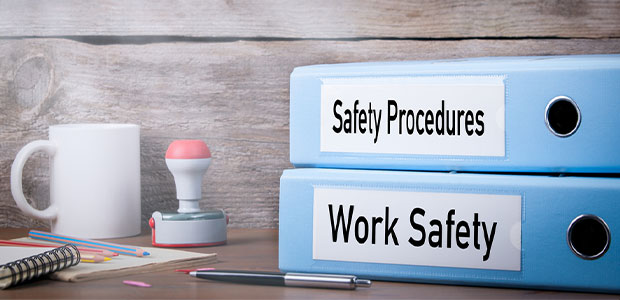
Five Steps Business Owners Should Take To Help Keep Workplaces Safe
- By Josh Feinberg
- Dec 02, 2021
Since the start of the pandemic, occupational safety managers have needed to stay one step ahead of the crisis to keep businesses running and employees safe. Now, as we begin to emerge from the pandemic, and businesses from Wall Street to Main Street are considering fully reopening the workplace, occupational safety managers need to strengthen their commitment to protecting the long-term health of their employees.
Health and safety professionals know that offices are breeding grounds for disease-causing pathogens, not only COVID-19, but other viruses such as influenza and the common cold. If unmitigated, office-borne illnesses can quickly spread and cause financial challenges to businesses and commercial landlords. The flu alone creates an economic burden for the healthcare system and society of $11.2 billion per year, while costing the U.S. approximately 20 million workdays per year.
With the fear of contracting the Delta or Omicron variant widespread, workers will expect that their employers are taking every step to ensure a safe and healthy workplace. To that end, there are cleaning and routine disinfection protocols that should be put into place to mitigate the spread of pathogens and reduce rates of cold, influenza and stomach illness. The steps that businesses should consider when developing their comprehensive cleaning protocols include:
Initial Site Assessment
Performing a site assessment will help businesses plan and prepare for building and occupant health and safety. The first step includes conducting a thorough walkthrough to identify high-touch areas where routine disinfection is needed. Where possible, high-touch items that can be replaced with dispensers and touchless products should be identified, and the most appropriate areas to add disinfecting wipes or hand sanitizing stations should be located. Lastly, consider installing a physical barrier at the reception desk and developing visitor protocols.
Decontamination Plan
Developing a decontamination plan in partnership with trained cleaning professionals is critical, and will ensure a streamlined response should a positive COVID-19 case or other viral infection be reported. Decontamination plans should consider the benefit of advanced cleaning technologies, such as electrostatic spraying, to reduce environmental contamination. When appropriate, the plan should be communicated to employees to foster confidence.
Occupant Communication Signage Kits
Prioritizing clear and consistent communication through signage and transparent updates will help employees adhere to the rules of the building – including keeping spaces clean – and feel comfortable returning to the workplace. Recommended forms of signage include, but are not limited to, entryway easel signs communicating mutual social contracts upon entering the space, educational wall posters, restroom clings to promote proper hand washing, table tents in common areas, and a web page with FAQs for occupants.
High-Touch Disinfection
Creating safer spaces requires more robust, frequent disinfection beyond the routine cleaning procedures used pre-pandemic. High-touch surfaces – such as desks and tabletops, chairs, telephones, keyboards and mice, doors and light switches, and elevator buttons – should be cleaned hourly to daily with EPA-registered disinfectants qualified for use against COVID-19. To optimize the effectiveness of the cleaning and disinfection process, a microfiber cloth should be used with the EPA-registered disinfectant.
Broader Disinfection
Nightly to quarterly, a larger, broader disinfection should be considered to complement the scope enhancements and increased frequencies of high-touch point cleaning and disinfecting. This can be accomplished through the use of electrostatic sprayers, focused on the broad disinfection of large areas, and utilize hospital grade EPA-registered disinfectants with faster kill times and broader pathogen elimination should an outbreak occur.
Ultimately, with employees returning to the workplace as the flu season is just starting and epidemiologists are anticipating a “twindemic,” it is essential that disinfection be part of our workplace culture. Complementing traditional cleaning measures with advanced disinfecting procedures is proven to reduce not only COVID-19 but also other common pathogens that sicken millions of people and cost businesses $225 billion in productivity losses every year.